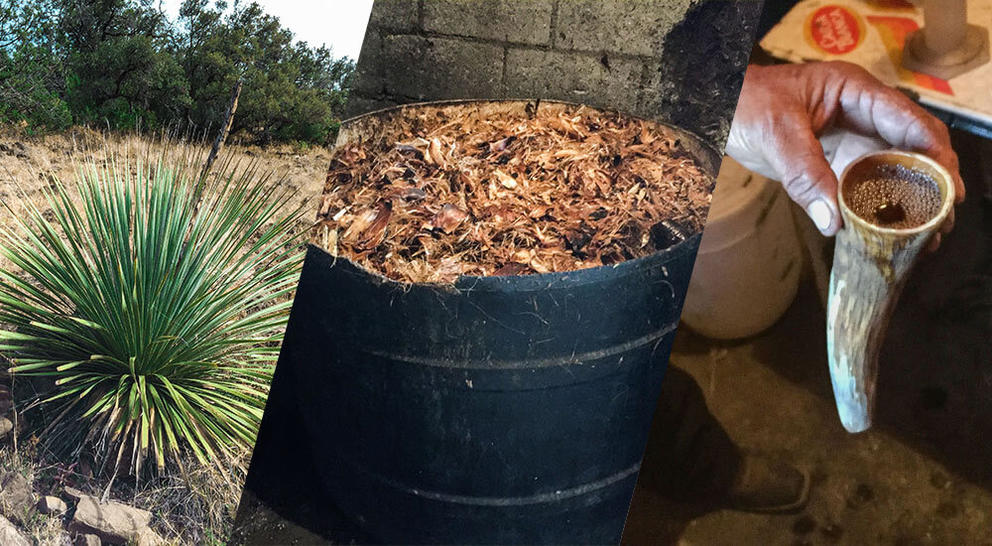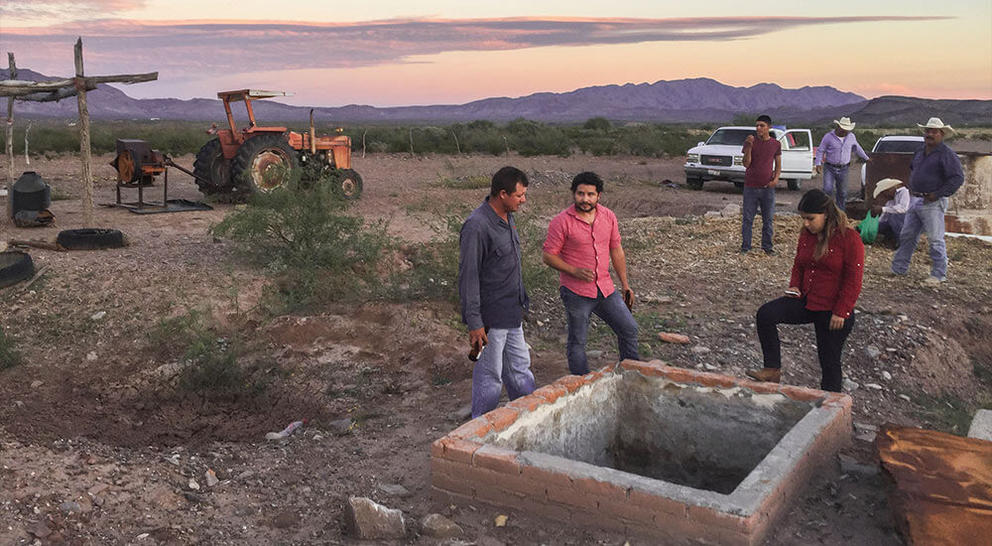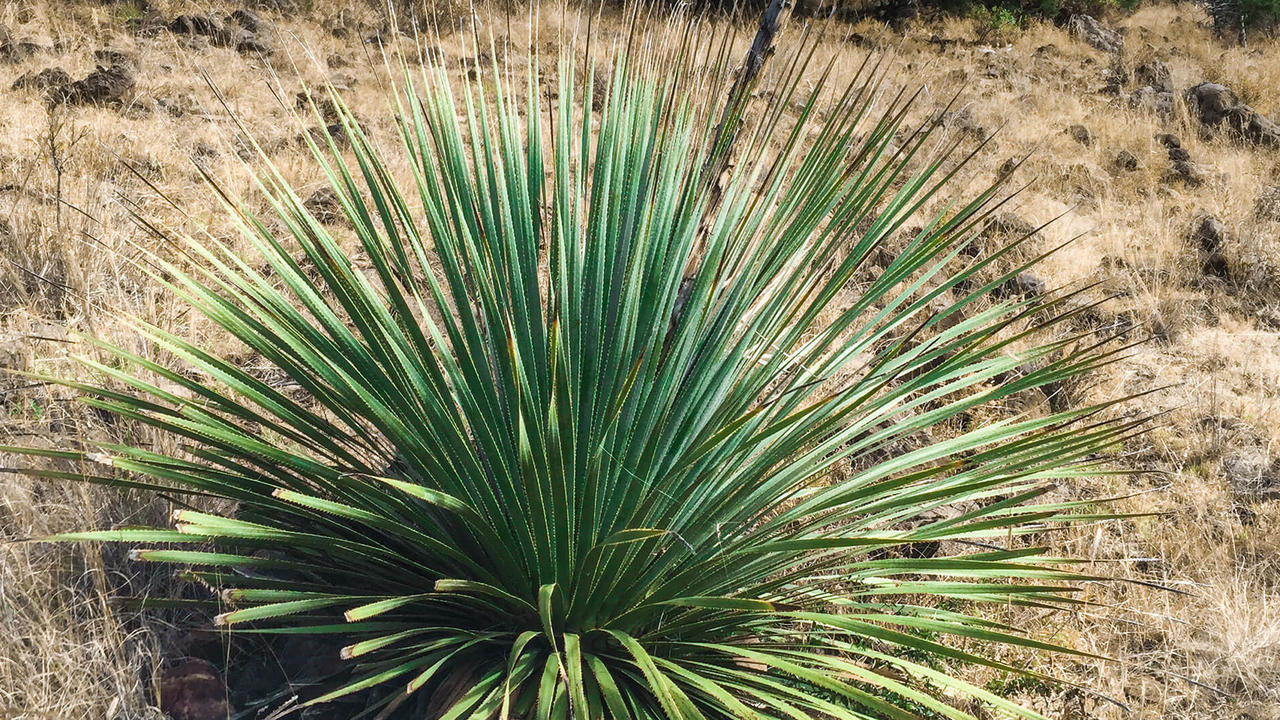We all know Tequila by now, and most of us know Mezcal and maybe even made the acquaintance of Raicilla. But what about their not-so-distant relative Sotol? Despite being a Mexican spirit with a Protected Designation of Origin (PDO) and a production very similar to that of Mezcal, is it really part of the agave spirits family?
The protected gardens of Dasylirion
To start and establish where in Mexico we are, the state of Chihuahua is the largest and most northern state of Mexico bordering Texas and New Mexico in the U.S. Besides Chihuahua, you may also produce Sotol in the states of Coahuila and Durango.
Sotol is the name of a Mexican spirits category with a PDO. But it’s also the common name of a desert plant that grows naturally and wild in the Chihuahuan desert. The plant is found starting from southern U.S. all the way down to the Pacific Coast of Oaxaca in southern Mexico. There are 22 different species of the plant distributed across Mexico. The scientific name of the plant is Dasylirion.
In contrast to agave, Dasylirion is a polycarpic plant so it can reproduce itself more than once before dying. It is also dioecious, meaning it has either male or female plants, something that can be determined only after it shoots - the male plant bringing the flower, and the female the seeds. 
Sotoleros preserve the traditional ways of production
Ever heard about the Desert Spoon?
The sotol plant is related to agave as both belong to the Asparagaceae plant family. But whilst Agave is in the Agavoideae subfamily, Dasylirion is in the Nolinoideae. Visually, you can tell the difference by looking at the leaves. Agave has thick, fleshy leaves and sotol has thin, flexible ones. On the side of the thin leaves, you find small teeth that work as a defence mechanism for the plant to survive in the wild. If you follow the banderillas (as the leaves are called) down to the core of the plant, it thickens and looks like a spoon. That’s why the plant is more commonly known in the U.S. as called Desert Spoon. Back in the day, cowboys often used these leaves as a spoon when working in the fields.
Down by this spoon, at the core of the plant, is where the starch, or sugar, is trapped in thin layers of fibres. The maestro sotoleros, or vinateros, are experts in the fields and have all the knowledge of which plants to select. The ones who shoot a stalk, or quiote, are left, since all the sugars then are in the stalk. Once the stalk is discarded by the plant, the sugars return to the core.
From spoon to a drink - making a sotol spirit
Sotol is harvested by hand, using a steel bar to pop the plant from the ground, so it turns. After that, the leaves are cut leaving only the core, or the heart - piña. Think of this core as an artichoke or an onion consisting of layers. The sotol cores are brought to the distillery, or vinata, and cooked in underground ovens, like those of Mezcal. The difference is that you leave space in the oven for water. For a normal size oven taking about three to four tonnes of sotol plants, you add about 20 litres of water per day to create humidity and an even steam-like cooking. Here the starches are turned into fermentable sugars.
To release the sugars from the fibres, the cores are shredded in small mechanical mills or wood chippers. But before this, the cooked cores are left for about a day to rest and to attract wild airborne yeast, so a pre-fermentation starts. Water is added to the shreds in wooden vats and the real fermentation can start! Some producers still use squared underground vats, but today more and more of them are using overground vats due to logistics.
As I was working on this piece, I had a conversation with Ricardo Pico from Chihuahua, the home state of Sotol. Ricardo has been instrumental in spreading the gospel and knowledge of Sotol to the world. He’s behind several crafted brands and most recently a key player for the world’s first global Sotol brand partly funded by a spirit giant and backed by a celebrity, rock star Lenny Kravitz.
Ricardo Pico with local sotoleros in their desert distillery
Ricardo says it’s not only about what looks pretty but also what works best for the workers in the vinata - of course, without altering the process and methods. “We need to keep traditions but also be smart,” says Ricardo.
The maestros study the bubbles during fermentation to determine when it’s time to distill. Today, most producers use copper pot still, and distill twice, while some still use the older type with a wooden condenser and underground serpentine. This is also a change made for efficiency and for sustainability reasons. The older type of stills often leaks vapours resulting in more plants needed to produce the same amount of spirit. Small details and steps are implemented so as not to compromise the environment.
Methods written in history
Traditional Sotol, or the historical taste if you like, clocks in at about 50% ABV and it’s what the maestros call parejo - equal and balanced, with flavours obtained through a balance of traditions and technique.
Historically, two small cow horns were used for measuring the alcohol. By pouring the fresh distillate between the two horns, pearls or bubbles are formed. The pearls reflect the density of the alcohol. If the pearls close from one end of the horn to the other, if they’re medium-sized and break in the middle - you have parejo. Larger pearls that break quickly mean that there’s 60% ABV or above, and smaller pearls that break on the sides will be under 50% ABV.
The maestros are very accurate and knowledgeable when using this technique, learned through generations. The heads and the tails from distilling are used to adjust the alcohol - up (heads) or down (tails), to reach parejo. Each batch is different, as production is done with live raw material.
The drink, with along tradition rooted in its geographic location and overpassing the boundaries of time - has a very interesting story to tell. After giving you an insight into its physical and chemical features, I’ve explored deeper its social context, current status, and future potential. I talked to Ricardo Pico, one of the people standing at the forefront of the Sotol’s awakening in the 21st century. You can find takeaways from our conversation here.
All images used in the article are from Björn Kjellberg's private collection.
Björn Kjellberg, Norrviken, Stockholm, April 2023

